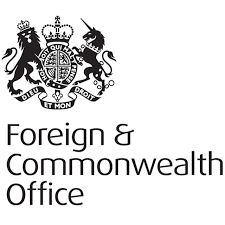PRESS RELEASE : Celtic gold twisted torc bracelet at risk of leaving the UK [September 2024]
The press release issued by the Department for Culture, Media and Sport on 4 September 2024.
A temporary export bar has been placed on a Celtic gold twisted torc.
- The bracelet has been valued at £45,000
- Export bar is to allow time for a UK gallery or institution to acquire the torc
A temporary export bar has been placed on a Celtic gold twisted torc bracelet dating back to the Iron Age.
The bracelet is a fine and well-preserved example of a personal ornament particular to Britain in the late first millennium BC known as a ‘torc’.
Personal ornaments, such as this gold torc bracelet are rare finds in Britain and are often closely associated with the identity of ancient Britons prior to the Roman invasion.
The torc was created from two wires twisted and plied together with a single, round, looped terminal at either end. Experts advise that it has been bent to form a bracelet from a larger ring, likely either from an arm ring or a small neck-ring for a child.
The form and style confirms that it originates from Britain, most probably central or eastern England, in contrast to the diverse torc forms that are found across Continental Europe.
Arts Minister Sir Chris Bryant said:
“This well preserved item brings our distant past into the present, and an opportunity to understand fashion and metalworking in a period of our history we are still learning so much about.
“I hope placing an export bar on this Celtic torc means a suitable UK buyer can be found so that the public have more opportunities to learn more about the lives of our ancestors.”
The Minister’s decision follows the advice of the Reviewing Committee on the Export of Works of Art and Objects of Cultural Interest. The RCEWA Committee found the torc met the third Waverley criterion for its outstanding significance to the study of goldsmithing, personal dress and identity in Britain before the Roman invasions.
Committee member Tim Pestell said:
“Torcs have long been associated with Britain’s Iron Age, an image conjured up ever since Roman historian Cassius Dio described Boudica, queen of the Iceni as ‘wearing around her neck … a large golden necklace’. This plied and twisted gold bracelet takes the form of a simple neck torc created from two wires twisted and plied together with single, round, loops at each terminal. Was this small example originally made to be worn around the neck of a child and later folded into a bracelet? Or was it made as a bracelet in the shape of a torc? Examples of jewellery like this are of utmost rarity and outstanding importance for what they can tell us about the early British society that produced them.
“Made of 97% pure gold and conventionally dated to c.150 – 50 BCE, this bracelet is of a form unique to England. Because the production of Iron Age jewellery like this is still imperfectly understood, its study can yield vital information on the use and availability of gold, goldsmithing techniques and decorative styles during this period. I earnestly hope that a museum might be able to acquire this remarkable bracelet and enable the public to enjoy seeing it and learning the new stories that will be told as a result of its further study.”
The decision on the export licence application for the torc will be deferred for a period ending on 3 November 2024 inclusive. At the end of the first deferral period owners will have a consideration period of 15 Business Days to consider any offer(s) to purchase the torc at the recommended price of £45,000 (Plus VAT). The second deferral period will commence following the signing of an Option Agreement and will last for three months.
Notes to editors
- Organisations or individuals interested in purchasing the Bracelet should contact the RCEWA 02072680534 or rcewa@artscouncil.org.uk .
- Details of the Bracelet are as follows: Plied and twisted gold bracelet. The form is that of a simple twisted torc created from two wires twisted and plied together with a single, round, looped terminal at either end. This is a fine and well-preserved example of a personal ornament particular to Britain in the late first millennium BC during a period conventionally described as the Iron Age. Gold alloy. Composition listed in the application is 97% gold. 72mm. Weight: 157.5g. Length along bracelet from end of one terminal to the other: 287mm.
- Provenance: London art market. Antiquities; Christie’s, London, 7 December 1994, lot 172. Sold at Christie’s, London, 5 July 2023, lot 55.
- The Reviewing Committee on the Export of Works of Art and Objects of Cultural Interest is an independent body, serviced by the Arts Council (ACE), which advises the Secretary of State for Culture, Media and Sport on whether a cultural object, intended for export, is of national importance under specified criteria.


